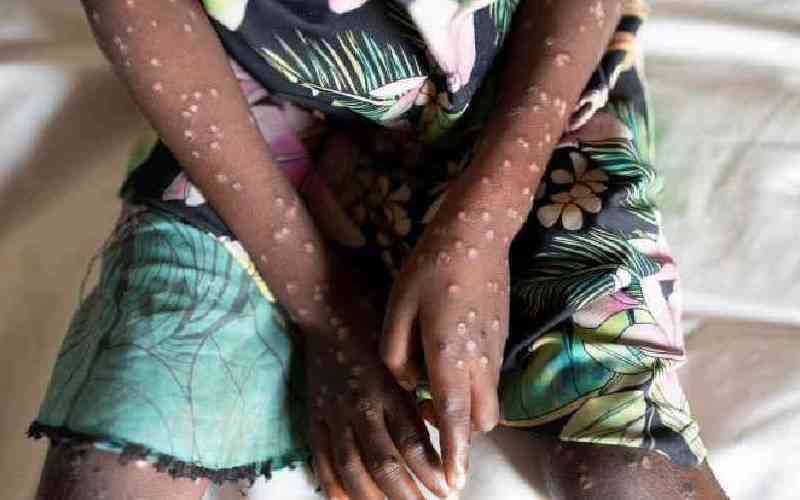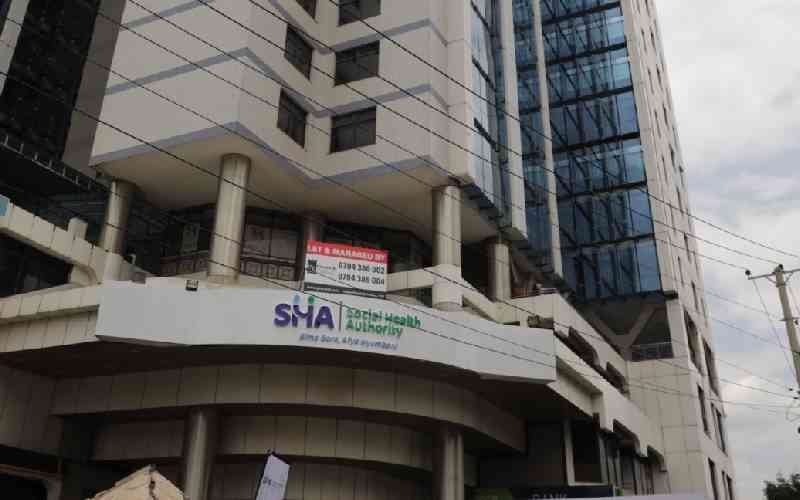
When he was only seven, and on holiday at the Kenyan coast with his family, young Etemesi Ochola felt an unfamiliar pain in his right hand. He couldn’t move it. His worried parents would then rush him to hospital when he couldn’t even bend the limb.
“Several tests were performed on me and the results showed that I had sickle cell anaemia,” Ochola, now 35, explains.
“On coming back to Nairobi from holiday, the pain worsened. It was too much I had to be admitted at the hospital for them to manage it,” he recalls.
His uncle also had the condition, and it was his counsel the family would count on a lot to understand what was happening.
In most cases, many, about 50 to 80 per cent of those diagnosed with the disease, die before reaching adulthood. A study by WHO indicates that sickle cell anaemia is associated with a very high rate of deaths among children in Africa.
Luckily for Ochola, they quickly learned how to manage it. Having the disease means having a low immunity, thus one has to be vigilant about feeding their body as much nutrition as they can to maintain great health. Usually, the abnormally shaped red blood cells that are a characteristic of sickle cell anaemia impair blood supply to the spleen making it malfunction and causing it to die (splenic infarction). It starts by scarring then it shrinks and stops functioning. Spleen is a crucial part of the body’s immune system and it filters blood. Most of the sickle cell warriors lose their spleen before the age of seven. So the absent or malfunctioning spleen is responsible for the low immunity in sickle cell disease.
“I had to be put on folic acid as well as other pain management medicines to keep me going. I drink plenty of water and eat a well balanced diet. I still have the pain episodes but I have people around me who know exactly what to do when I am too sick to function. I also cannot do heavy lifting,” he explains.
Hydrating well reduces the chances of the sickled red blood cells clumping together and blocking the blood vessels.
Day to day management
Those with sickle cell anaemia are also advised to consume plenty of fluids, use painkillers like paracetamol when needed, keep warm in cold weather and manage levels of exercise within each individual’s tolerance.
However, regular lifelong medical care is essential to maintaining health, including the prevention and treatment of infections (using antibiotics and vaccines against pneumonia); prevention of malaria through regular use of preventive medicines, prescription of blood builders and transfusions when needed. However, the cost of treatment is generally enormous –the pain crises are unpredictable and frequent. Majority of poor families sometimes give up seeking any form of health care.
While one develops sickle cell disease if they got the gene from both parents, Ochola’s parents were oblivious of the fact that they were carriers.
“My mum is from the coastal area while my father comes from western Kenya. They had no idea that their children would end up acquiring some genes from them that would expose them to sickle cell anaemia,” says Ochola.
Having red blood cells with haemoglobin S (HbS) makes people more resistant to infection with malaria. This is particularly an advantage to people with one sickle cell disease gene, who have an in-built resistance to malaria and at the same time have no problems associated with carrying one gene. This resistance to malaria doesn’t apply to those with the disease but only to carriers of one of the sickle cell disease gene.
“For instance my parents cannot get malaria, they are carriers,” Ochola pointed out.
Sickle cell anaemia in times of Covid-19
People living with sickle cell disease are at a higher risk of contracting Covid-19 and suffer more serious symptoms. This is due to their low immunity.
What is sickle cell disease?
Sickle-cell disease (SCD) is a genetic condition in which the red blood cells contain haemoglobin S (HbS), an abnormal form of the oxygen-carrying protein. Individuals who inherit sickle-cell genes from both parents develop SCD, while those who inherit the gene from only one parent have the sickle-cell trait (SCT). People who carry one SCD gene are completely healthy, but they do have the risk of future children being affected by the condition if their partner also carries one gene
Those with the trait are carriers, have no symptoms, but can pass the gene on to their children. According to WHO, deaths from SCD complications occur mostly in children under five years, adolescents and pregnant women.
However people who live with this condition, have to adopt to certain lifestyles in order to achieve quality of life.
Inbuilt resistance to malaria
An analysis by the National Center for Biotechnology Information showed that Sickle haemoglobin (HbS) is considered to be protective against malaria.
A KEMRI study noted that the in-built resistance to malaria is the reason why sickle cell disease is particularly common in parts of Kenya where malaria is also common, such as the Coast and Western Kenya. However, migration means that the condition can be found anywhere in the country.
“…Having red blood cells with HbS makes people more resistant to infection with malaria. This is particularly an advantage to people with one SCD gene, who have an in-built resistance to malaria and at the same time have no problems associated with carrying one gene,” the research reads in part.
What causes the pain crises?
The sickled red blood cells tend to stick together blocking the passage of blood and thus oxygen around the body. The blockage of the tiny blood vessels in the chest, abdomen and joints causes the pain.
 The Standard Group Plc is a multi-media organization with investments in media platforms spanning newspaper print
operations, television, radio broadcasting, digital and online services. The Standard Group is recognized as a
leading multi-media house in Kenya with a key influence in matters of national and international interest.
The Standard Group Plc is a multi-media organization with investments in media platforms spanning newspaper print
operations, television, radio broadcasting, digital and online services. The Standard Group is recognized as a
leading multi-media house in Kenya with a key influence in matters of national and international interest.











